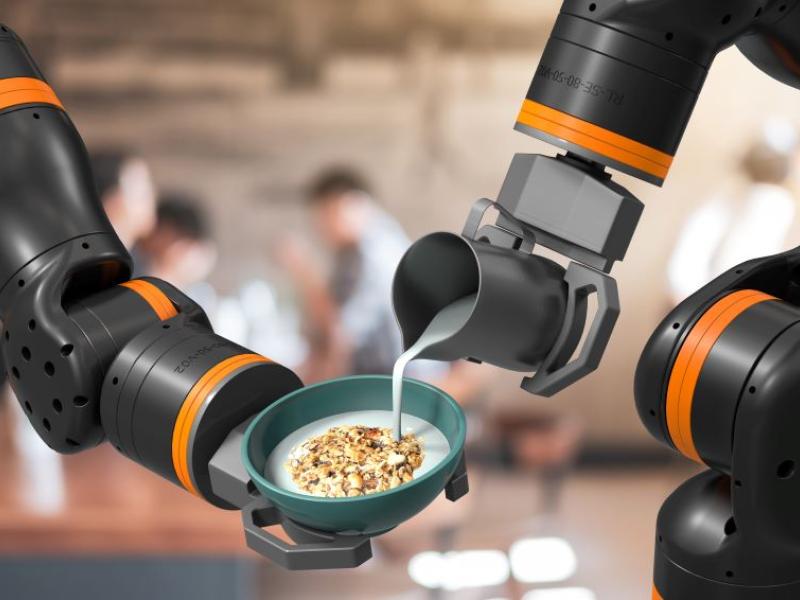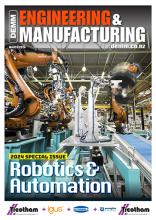Around 3000 B.C., the Egyptians created mechanical devices to ease repetitive manual tasks. However, the earliest modern robots weren’t introduced into industrial settings until the late 1950s. For millennia, workers have turned to technology to avoid the most physically demanding or monotonous tasks. But, in the search for better technology to use in manufacturing, has worker safety remained the primary concern? Here John Young, APAC director at automation parts supplier EU Automation, considers how developments in collaborative robots are improving safety in manufacturing.
Traditional industrial robots operate behind a cage, physically separated from human workers. If this safety measure fails for any reason and a worker walks into the path of an industrial robot, it will hit them at full force without ever detecting the worker at all. While these kinds of accidents are rare, they do happen, and can be fatal.
Collaborative robots
Since the first cobot was installed in 2008, they have steadily grown in popularity around the world due to their flexibility and because they are designed to work in close proximity to human workers. Due to the lack of physical separation between cobots and workers, they are designed and programmed with safety in mind.
In 2016 the International Organisation for Standardisation (ISO) released guidelines regarding collaborative robots and human safety, which were last reviewed in 2019. These regulations detail how manufacturers can use the wide range of safety equipment available to ensure the safety of their workers, including using emergency stop buttons, safety light curtains and force and speed limits.
The flexibility and adaptability of cobots means that it is impossible for their original manufacturer to test all possible applications. It is therefore down to the end user to ensure safety and a comprehensive risk assessment is essential.
The risk assessment must identify any reasonably foreseeable contact between the robot and an operator and must crucially be specific to the end-effector, as each one will have very different safety implications. For example, a cobot fitted with a welding tool will require much stricter safety procedures than one fitted with a simple probe. Risk assessments must also be regularly updated, to reflect any reprogramming.
Recent developments
With safety being such a key component of cobots, other capabilities such as speed are often compromised with traditional collaborative robots. But some recent developments are allowing collaborative robots to increase their productivity while keeping workers safe.
Certain newer cobots can determine the best way around an obstacle without having to pause. This advance in technology means cobots can spend much less time stopping to avoid collisions and more time being productive. It also means several cobots will be able to work together independently, as well as in the immediate vicinity of humans.
In addition to seeking technology that will free up workers from dull or physically demanding work, manufacturers must keep worker safety in mind. The latest developments in collaborative robots will bring improvements in both productivity and safety and being aware of these developments in the field will help manufacturing managers both meet and prepare for future safety standards.
If you’re looking for automation equipment, EU automation can help. To find out more, visit www.euautomation.com.






